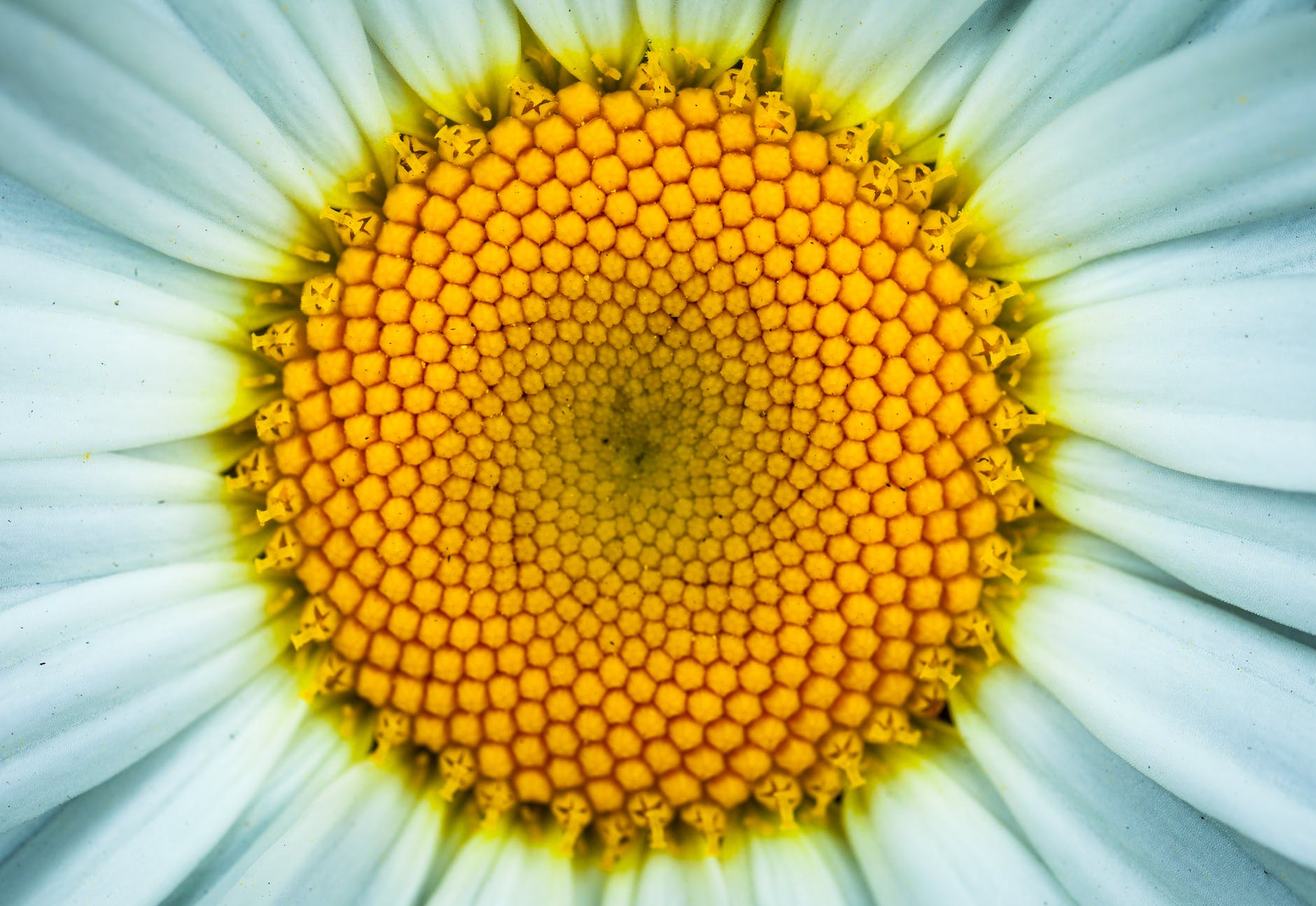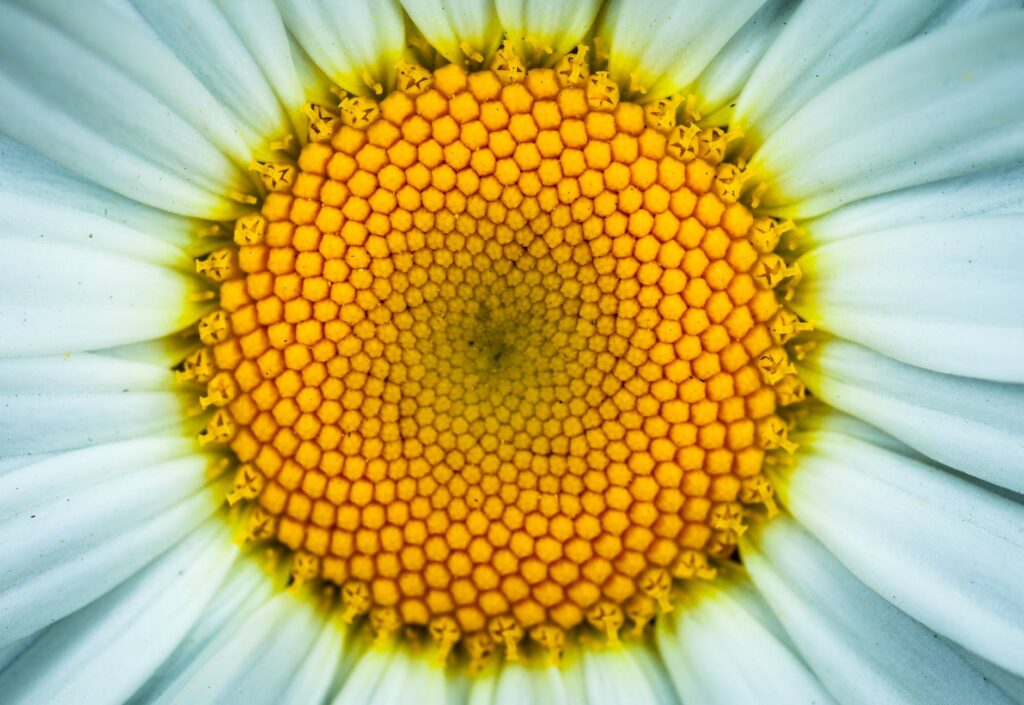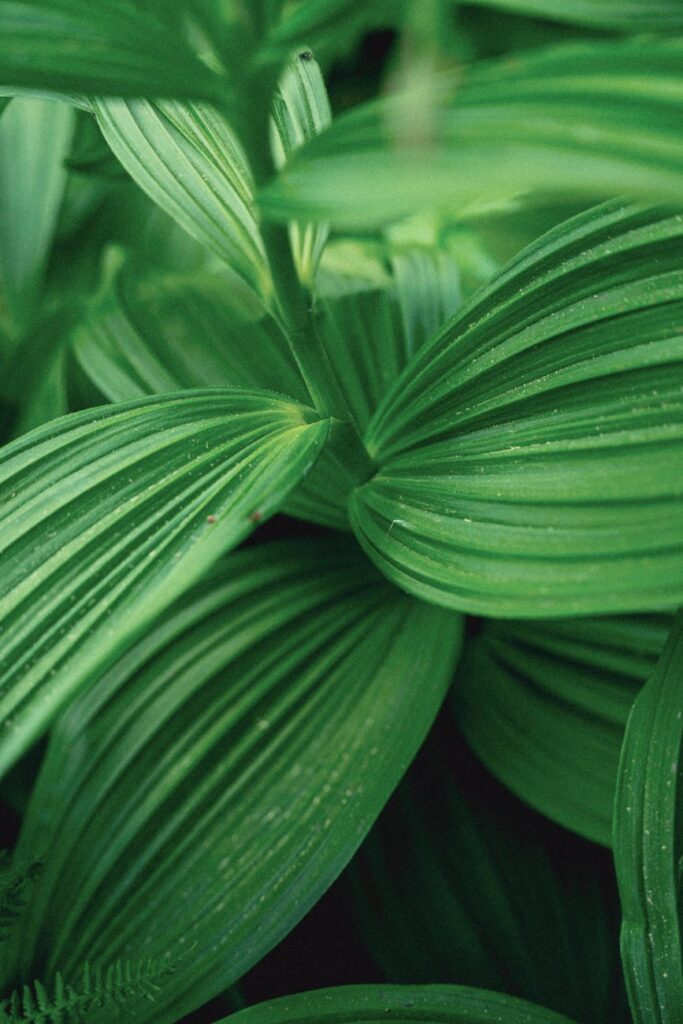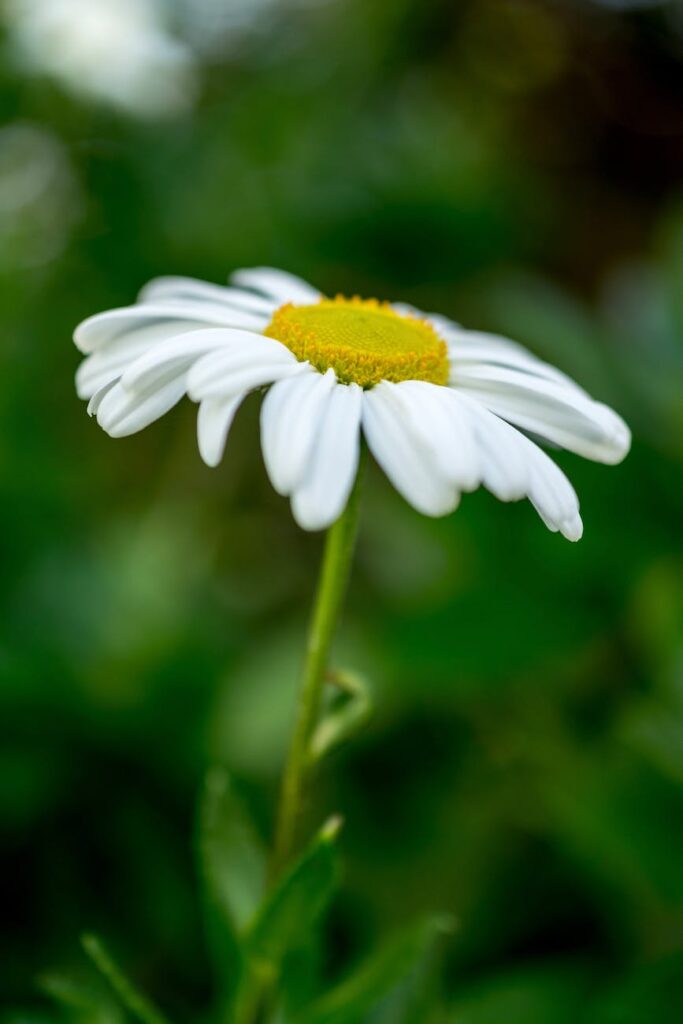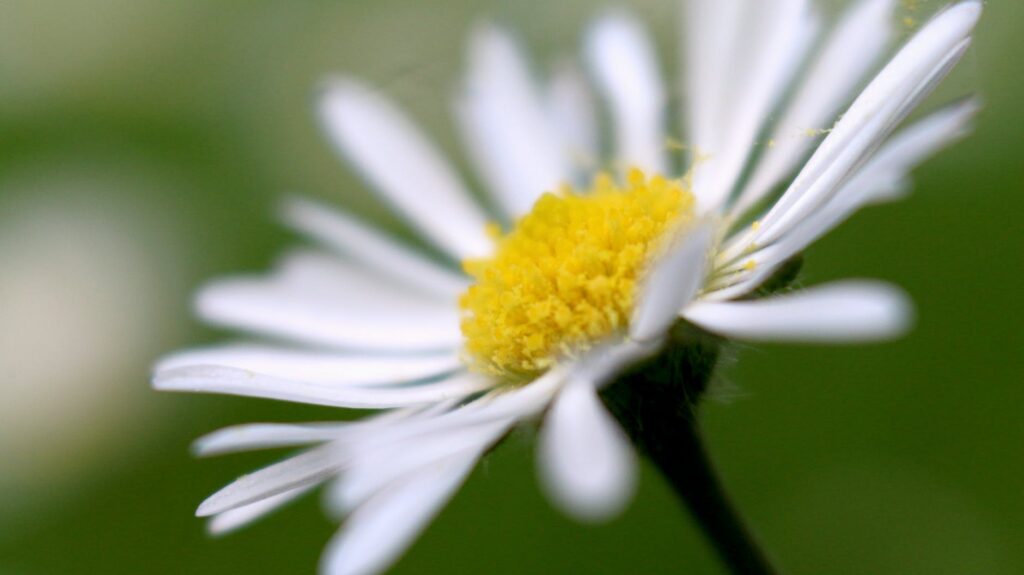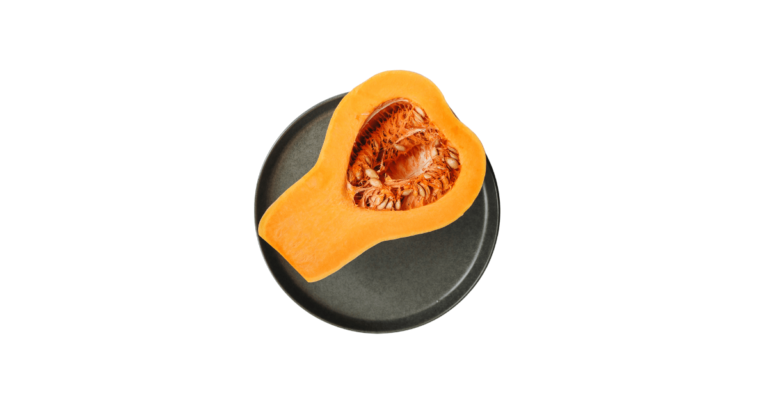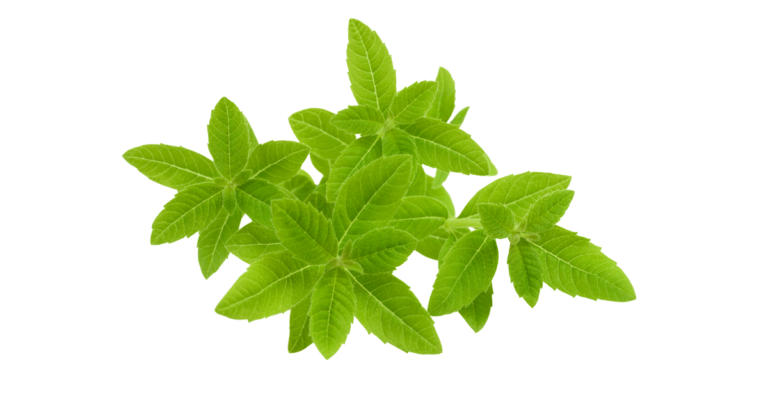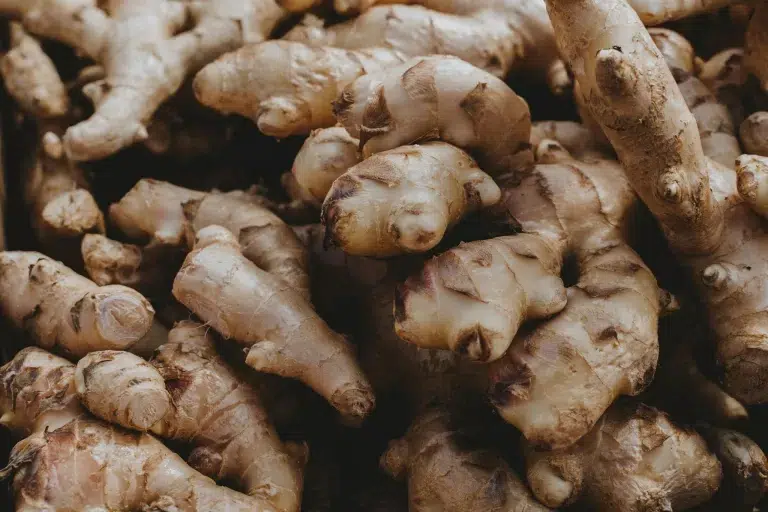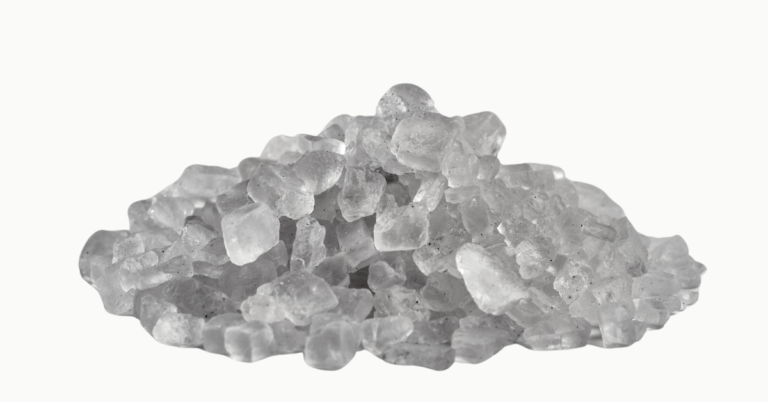7 Days of Chamomile Tea For Better Restfulness & Clarity
Chamomile, is a remarkable plant because of its several therapeutic actions.
This is due to the presence of numerous bioactive compounds found in the plant flower heads. For instance one of its key compounds is Apigenin.
Apigenin is a flavonoid with antioxidant properties and anti-inflammatory effects.
Moreover, the plant is recognised for sedative and anti-anxiety actions. As a result, it may provide therapeutic effects such as, calming actions on the mind and body.
In traditional sciences, chamomile has a long standing history of use. Chamomile has several other recognised properties which this article aims to explore.
Key Points In This Article
This article explores the following key points:
- Chamomile plant and its types.
- Its bioactive compounds and associated actions.
- Related case study and suitability of chamomile.
Chamomile: Matricaria Chamomilla
Scientifically referred to as Matricaria Chamomilla, Chamomile is a small, daisy-like flower with a green plant stem that belongs to the Asteraceae botanical family.
It belongs to the genus Chamomilla and is native to Europe and Western Asia.
Chamomile is a multi-faceted plant, referenced throughout history for its medicinal properties ranging from being supportive to the immune system, promoting relaxation and restfulness as well as being a potent anti inflammatory.
Star Among Medicinal Species
(Singh et al., 2011)
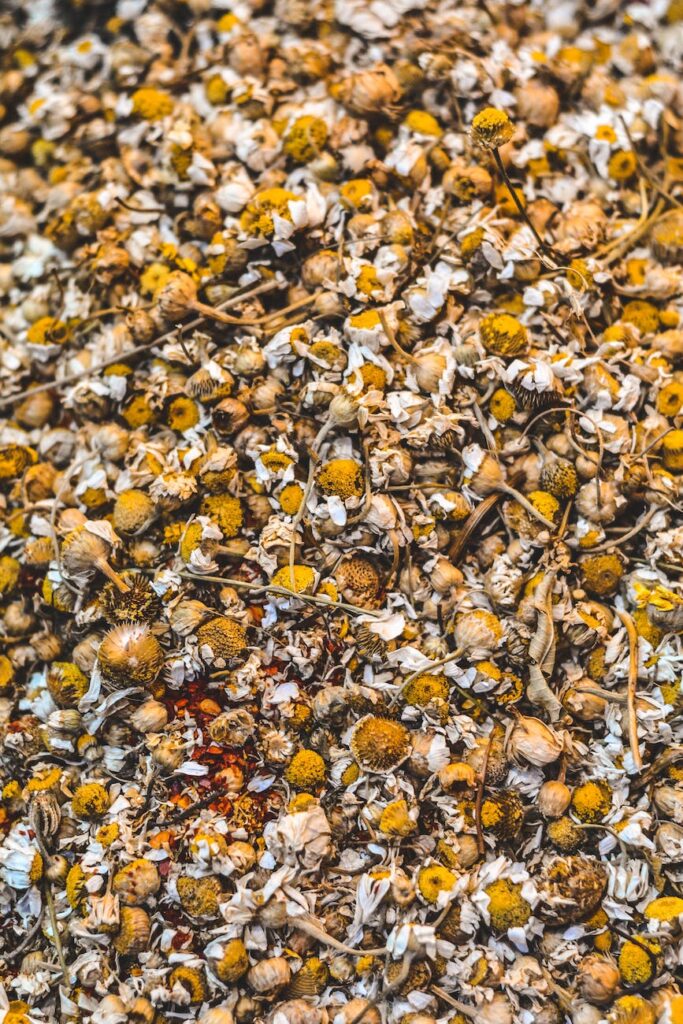
Germany leads the way in extraction processes for chamomile oils, while Hungary stands as one of the largest producers of chamomile.
The plant has different symbolic names due to its inherent properties. For instance, (Sah et al., 2022) suggest that it known as “cure all” in Europe. However, in Germany, it is “alleszutraut”, which translates to “capable of anything.”
Several other regions produce Chamomile, including, Asia, Europe and South America.
Traditional Systems of Medicine
Similarly, chamomile is extensively used for medicinal purposes in various traditional systems of medicine.
The key parts used include, leaves, stems, and roots.
Types of Chamomile
There are two primary species of the plant that bear significant importance due to their diverse pharmacological and phytotherapeutic properties:
- German chamomile (Matricaria chamomilla L.).
- Roman or English chamomile (Chamaemelum nobile syn. Anthemis nobilis L.).
| German Chamomile (M. chamomilla L.) Blue Chamomile | Roman Chamomile (Chamaemelum nobile syn. Anthemis nobilis L.) Sweet Chamomile |
Difference: True Chamomile & Stinking Chamomile
Matricaria Chamomilla, True Chamomile , can be confused with plants of the genera Anthemis and Anthemis cotula L, known as “stinking chamomile.”
Stinking chamomile is toxic and in some cases poisonous plant. It has a distinctly unpleasant scent.
Whereas, True Chamomile has a sweet aroma.
The M. chamomilla L. have more biological effects than other species
(Sah et al., 2022)
Bioactive Compounds In Matricaria Chamomilla
The plant contains several bioactive components, such as sesquiterpenes, flavonoids, coumarins, and polyacetylenes.
As a result of this, its therapeutic significance lies in the diverse group of bioactive compounds it contains, which hold potential for a range of medicinal purposes.
In this respect, the synergy created by the interaction of compounds are subject to the food matrix effect principle.
Therefore, when examined as a “whole” therapeutic source, its efficacy may vary as compared to its isolated compounds.
There are several classes of bioactive compounds, including:
| Lipophilic compounds | Polyphenolic compounds | Hydrophilic compounds | Polymer compounds |
|---|---|---|---|
| Sesquiterpenes; Chamazulene | flavonoids; Apigenin Luteolin | coumarins; herniarin, umbelliferone | polyacetylenes |
Bioactive Compounds According To A Case Study:
To aid in the understanding of the compounds present in plant, the following study is referenced:
“Sah, A., Naseef, P. P., Kuruniyan, M. S., Jain, G. K., Zakir, F., & Aggarwal, G. (2022). A Comprehensive Study of Therapeutic Applications of Chamomile. Pharmaceuticals, 15(10),” suggest the following;
Chamomile flowers contain a plethora of secondary metabolites. These include 28 terpenoids, 36 flavonoids, and 52 additional compounds that exhibit promising pharmacological activities.
Here is a closer look at some individual compounds:
1. Sesquiterpenes
Sesquiterpenes are organic compounds identifying with a wide range of botanical specimens and essential oils.
Chamazulene, a sesquiterpene found in chamomile blossoms, is accountable for the distinct blue hue displayed by the flowers. Hence the term blue oil, a phytotherapeutic commonly extracted in Germany.
Chamazulene has anti-inflammatory properties.

2. Flavonoids
Flavonoids are plant compounds recognised for their therapeutic actions. They provide vibrant colors to many plants known for their potential health benefits.
These compounds are associated with antioxidant, anti-inflammatory, anticarcinogenic, antiviral, neuroprotective and cardio-protective effects.
An important flavonoid in Chamomile is Apigenin, linked to its anxiolytic properties.
In addition to apigenin, it contains luteolin, patuletin, and quercetin (Srivastava et al., 2010).
More than 120 chemical constituents have been identified in chamomile flower as secondary metabolites, including 28 terpenoids, 36 flavonoids, and 52 additional compounds with potential pharmacological activity
(Sah et al., 2022)
3. Coumarins
Coumarins are organic compounds naturally present in plants.
They contribute to the plants unique properties and potential benefits, such as anti-inflammatory and antioxidant properties. These compounds work in synergy with other active constituents in chamomile.
4. Polyacetylenes
Polyacetylenes are characterised by a series of carbon-carbon triple bonds in their chemical structure.
Biological activities, including antioxidant, anti-inflammatory, and antimicrobial effects are found in these compounds.
Furthermore, polyacetylenes have also shown potential in the field of neuroprotection. Studies have indicated that these compounds may help protect against neurodegenerative diseases by reducing oxidative stress and inflammation in the brain.
It is worth noting that the concentration and types of bioactive compounds can vary depending on the plant species, growth conditions, and harvest methods.
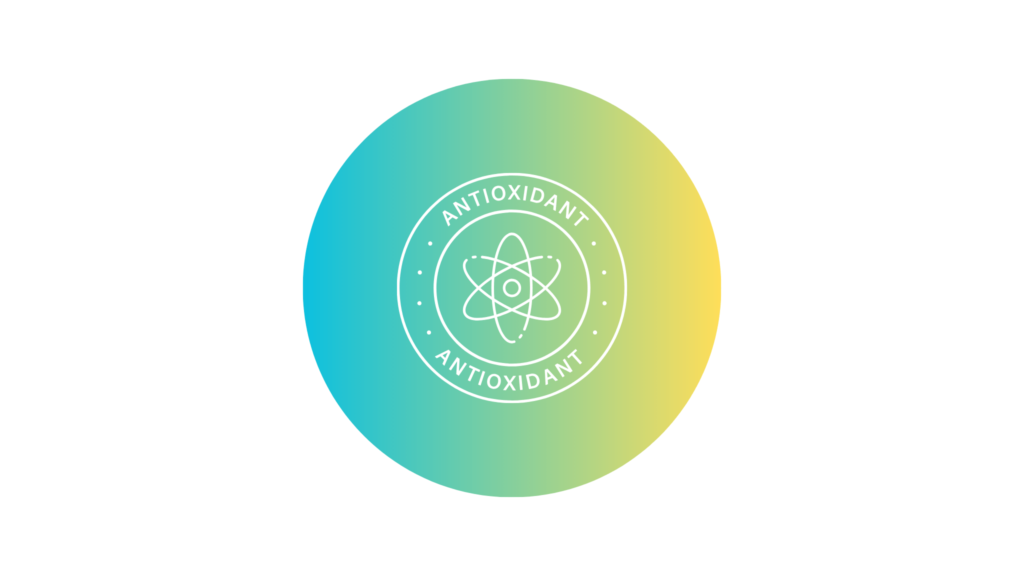
Chamomiles Flavonoid Apigenin
Apigenin is a powerful flavonoid in chamomile. Known for its anti-inflammatory and anti-carcinogenic properties.
Research suggests that apigenin may help reduce inflammation in the body and inflammation can contribute to a number of chronic diseases.
Apigenin Anxiolytic Actions
Apigenin is extensively known for its anxiolytic properties. It demonstrates potential to effectively reduce levels of anxiety.
Furthermore, numerous studies highlight its antioxidative properties and remarkable bioactive anti-inflammatory effects.
Beyond its anti-anxiety properties, this compound possesses a diverse range of phytotherapeutic uses. Its ability to mitigate cellular-mediated inflammatory responses, blood pressure reduction, antibacterial and antiviral properties, cellular apoptosis, as well as the stimulation of immune responses.
The range of beneficial applications and potential merits associated with it is extensive. It is important to note that the above mentioned information provided serves as an illustrative overview and does not encompass the full breadth of its possible applications.
The Term Anxiolytic
Anxiolytic is a type of substance used to reduce or alleviate anxiety symptoms. They work by targeting the brain’s neurotransmitters, such as GABA, to promote relaxation and calmness.
Anxiolytics are used in generalized anxiety and to calm the nerves etc.
Aqueous extracts, such as in the form of tea, contain quite low concentrations of free apigenin but include high levels of apigenin-7-O-glucoside.
(Srivastava et al., 2010)
Factors That May Influence Efficacy
The bioavailability and subsequent advantages of a phytotherapeutic are contingent upon various factors.
It is important to understand that a plant’s capacity can be influenced by several factors, such as its origin, source, processing and extraction method, additional ingredients, manner of usage, and individual health status.
Therefore, its essential to consider not only the phytotherapeutic properties themselves, but also the modality and frequency of use and this varies individual to individual.
Examining Its Multi Therapeutic Influence
As evident from the previous sections, chamomile, like most plants, exhibits multi-therapeutic actions. This implies that it has the potential to aid in various aspects of well-being.
Here are some therapeutic terms associated with the plant:
| Carminative | Healing | Sedative |
| Soothing | Relaxing | Balancing |
| Relieving | Comforting | Cleansing |
Therapeutic Actions
This section delves into several essential points regarding the therapeutic actions of chamomile, according to the following study:
Srivastava, J. K., Shankar, E., & Gupta, S. (2010). Chamomile: A herbal medicine of the past with bright future. Molecular Medicine Reports, 3(6), 895. (https://doi.org/10.3892/mmr.2010.377):
- Chamomile may boost the immune system and fight cold-related infections. It’s linked to increased antibacterial activity due to higher levels of hippurate and glycine in urine. It also relieves hypertension symptoms, lowers systolic blood pressure, and increases urinary output.
- Chamomile steam is anti-inflammatory and reduces swelling, making it useful in treating common cold symptoms.
- Its tea in cardiac ailments has shown to assist in beneficial hemodynamic (cardiac) activity.
- Chamomile extracts, exposure may induce apoptosis in cancer cells but not in normal cells at similar doses.
- Manzana chamomile is rich in active ingredients and can be useful in treating eczema without exhibiting chamomile-related allergenic potential, as shown in a 2-week comparison study between Kamillosan(R) cream and hydrocortisone 0.5%.
Uses In GI, Digestive, Metabolic Areas
- The herb has traditionally been used to address various gastrointestinal issues such as digestive disorders, spasm, colic, upset stomach, flatulence, ulcer, gut irritation, esophageal reflux, and inflammatory issues. It can reduce acid output, decrease leukotrienes, gastric acidity, and secondary hyperacidity.
- Chamomile may be useful in diabetic wellness and management, studies suggest, a protective effect on pancreatic beta cells in diminishing hyperglycemia-related oxidative stress.
- Maybe helpful in reducing smooth muscle spasms associated with various gastrointestinal inflammatory disorders.
Uses In Topical Areas
- Ointment, tincture or essential oil may act as an anti inflammatory in hemorrhoids.
- Maybe useful in vaginal inflammation in womens of all ages (itching, discharge, pain with urination), chamomile carries few side effects.
- General wound healing; antimicrobial activity of the extract against various microorganisms has also been assessed and reported. Recent studies suggest that chamomile caused complete wound healing faster than corticosteroids.
Uses In Insomnia
- Historically, chamomile preparations, such as tea and essential oil aromatherapy, have been employed to address insomnia and promote a sense of tranquility (calming effects).
Uses In Osteoporosis
- Chamomile and osteoporosis, extract was shown to stimulate osteoblastic cell differentiation and to exhibit an anti-estrogenic effect, suggesting an estrogen receptor-related mechanism.
Aromatherapy Massage For Anxiety & Self Esteem
Aromatherapy massage has long been recognized in traditional and ancient wellness practices for its documented and referenced benefits on overall well-being.
Recent reports have investigated the effects of a specific combination of lavender, chamomile, rosemary, and lemon, administered solely to an experimental group of elderly women.
The findings indicated that aromatic massage demonstrates positive effects on anxiety reduction and enhancement of self-esteem.
Sitz Bath
Chamomile is also used in essential oil or tincture for a Sitz bath. It is can promote, general well being and relaxation as well as soothe inflammation.
The practice is carried out to soak and provide relief to lower body areas, private areas, reproductive organs etcetera.
7 Days of Chamomile Tea For Relaxation
For individuals with hectic work lifestyles, such as working in high concentration environments etc, it may have a soothing and relaxing influence.
- It may help promote a sense of balance, soothe and cool. Ideally, as a part of a well balanced routine including better dietary habits.
- It is suggested to consume its tea once or twice a day, preferably between meals, over a period of 7 days. Where possible consume chamomile tea 40 minutes before bedtime for soothing sleep.
A Few Noteworthy Points On Chamomile Tea
Here are a few interesting points on its tea according to (Srivastava et al., 2010):
- Aqueous extracts, such as in the form of tea, contain quite low concentrations of free apigenin but include high levels of apigenin-7-O-glucoside. (Apigenin-7-O-glucoside is associated with anti-inflammatory, antioxidant, anti-carcinogenic, and liver-protective effects. It may also help cognitive function and reduce anxiety and stress levels).
- Oral infusion of chamomile is recommended by the German Commission E.
- Chamomile tea is one of the world’s most popular herbal teas and about a million cups are consumed every day.
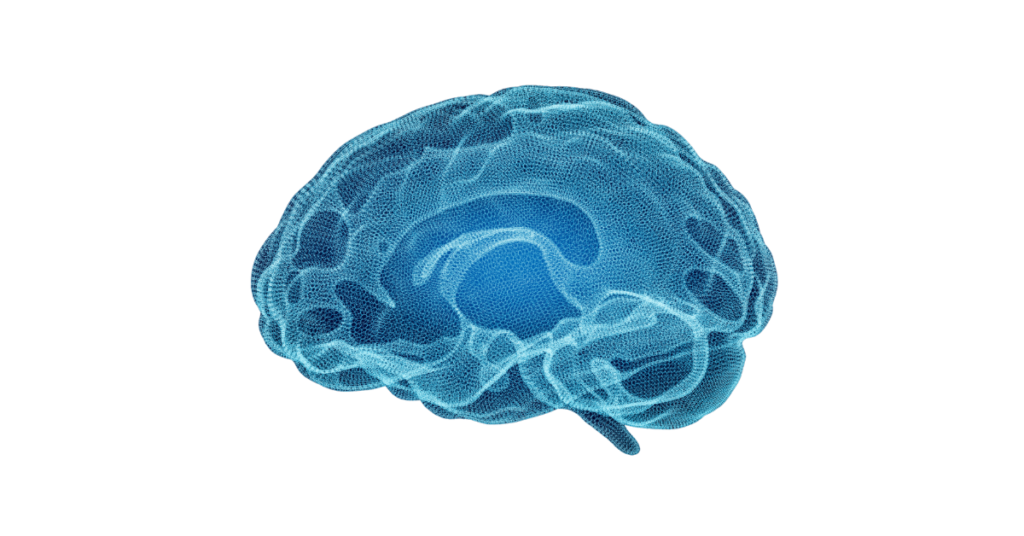
Ayurvedic Principles: Baboona
In Ayurveda, chamomile is classified as possessing dry and lightweight bio-characteristics.
As a multifaceted plant, Ayurveda suggests that it is helpful to pacify aggravated pitta (heat) and vata (air). For kapha (heaviness) it can be useful when used synergistically with other elements.
Chamomile is also called Karpurapuspa or Baboona in parts of India.
Traditionally it is associated with cooling and soothing properties, making it useful in alleviating anxiety and stress-related tendencies.
Chamomile tea is used as a general well-being infusion as part of a well balanced diet.
| Pitta Vitated Pitta is related to inflammations | Vata Vitiated Pitta is related to anxiety, nervousness | Kapha Vitiated Pitta is related to weight gain and difficulty losing weight |
Suitability
Chamomile is generally safe for consumption (GRAS).
While chamomile is generally considered safe for most people, it may cause allergic reactions in individuals with sensitivity to ragweed or other plants in the Asteraceae family (chrysanthemums, marigolds, or daisies).
Precautions
It is essential to seek professional guidance before altering your diet and to check if any diet or wellness routine is appropriate for someone pregnant, allergic, or has chronic health concerns.
This is an informational post only and does not constitute professional advice.
Informational Video: Chamomile Plant & Its Properties
References and online sources:
- Sah, A., Naseef, P. P., Kuruniyan, M. S., Jain, G. K., Zakir, F., & Aggarwal, G. (2022). A Comprehensive Study of Therapeutic Applications of Chamomile. Pharmaceuticals, 15(10). https://doi.org/10.3390/ph15101284
- Science Direct: Apigenin https://www.sciencedirect.com/topics/pharmacology-toxicology-and-pharmaceutical-science/apigenin#:~:text=Apigenin%20(Figure%202(a),its%20active%20constituents%2C%20including%20apigenin.
- Singh, O., Khanam, Z., Misra, N., & Srivastava, M. K. (2011). Chamomile (Matricaria chamomilla L.): An overview. Pharmacognosy Reviews, 5(9), 82-95. https://doi.org/10.4103/0973-7847.79103
- GOULD, L., REDDY, C.V.R. and GOMPRECHT, R.F. (1973), Cardiac Effects of Chamomile Tea. The Journal of Clinical Pharmacology and New Drugs, 13: 475-479. https://doi.org/10.1002/j.1552-4604.1973.tb00202.x
- Plants for a future – stinking chamomile: https://pfaf.org/user/Plant.aspx?LatinName=Anthemis+cotula
- United States Department of Agriculture: https://fdc.nal.usda.gov/fdc-app.html#/food-details/174156/nutrients
- Lipophilic: https://www.greenfacts.org/glossary/jkl/lipophilic.htm#:~:text=Definition%3A,Source%3A%20GreenFacts
- URIBARRI, J., WOODRUFF, S., GOODMAN, S., CAI, W., CHEN, X., PYZIK, R., YONG, A., STRIKER, G. E., & VLASSARA, H. (2010). Advanced Glycation End Products in Foods and a Practical Guide to Their Reduction in the Diet. Journal of the American Dietetic Association, 110(6), 911. https://doi.org/10.1016/j.jada.2010.03.018
- George L.J. Hull, Jayne V. Woodside, Jennifer M. Ames, Geraldine J. Cuskelly, Nε-(carboxymethyl)lysine content of foods commonly consumed in a Western style diet, Food Chemistry,Volume 131, Issue 1,2012,Pages 170-174, ISSN 0308-8146, https://doi.org/10.1016/j.foodchem.2011.08.055
- Ullah, A., Munir, S., Badshah, S. L., Khan, N., Ghani, L., Poulson, B. G., Emwas, H., & Jaremko, M. (2020). Important Flavonoids and Their Role as a Therapeutic Agent. Molecules, 25(22). https://doi.org/10.3390/molecules25225243

